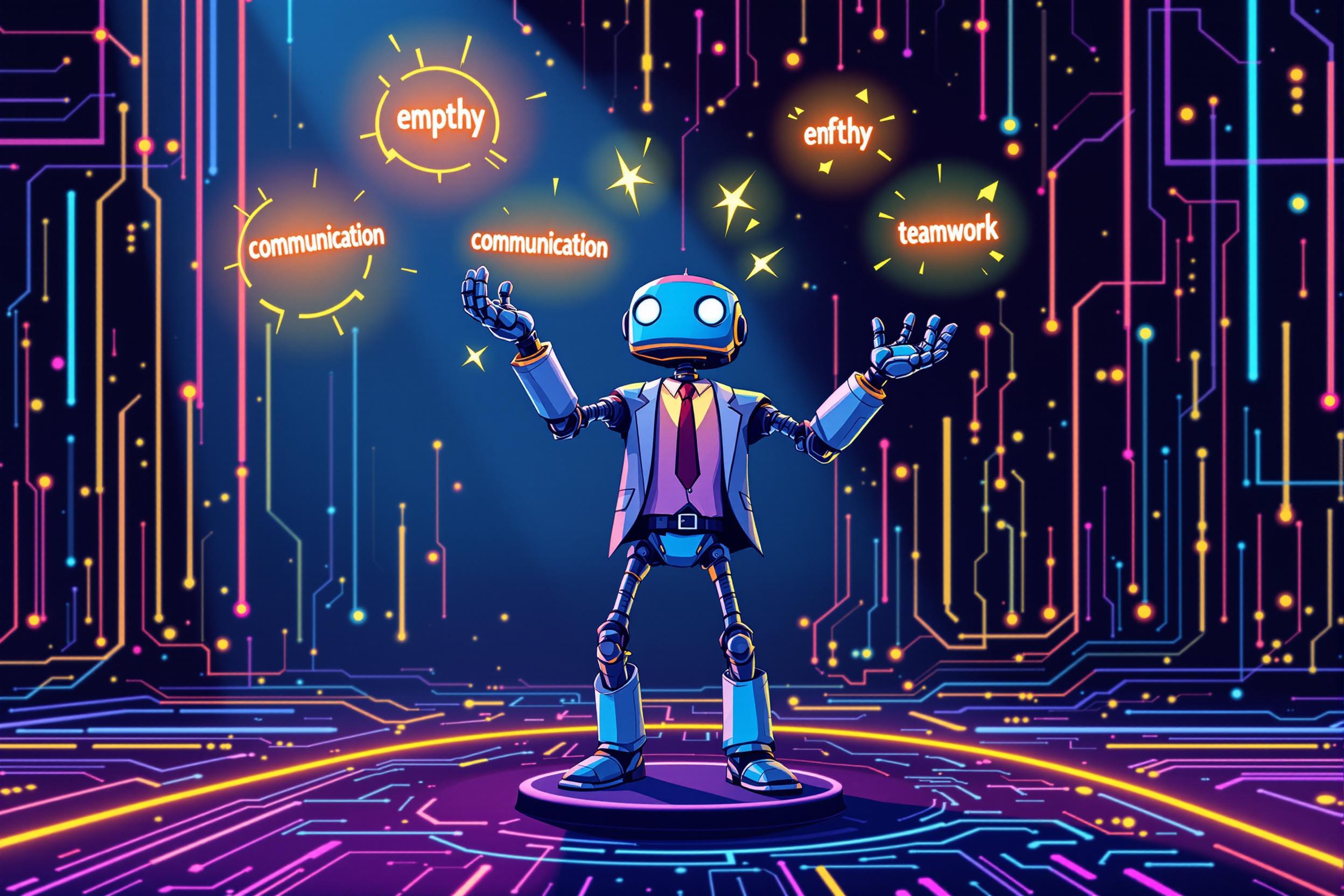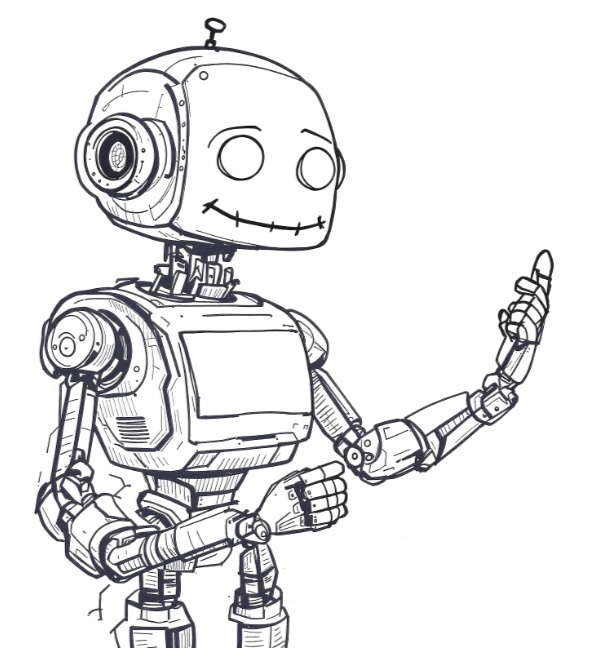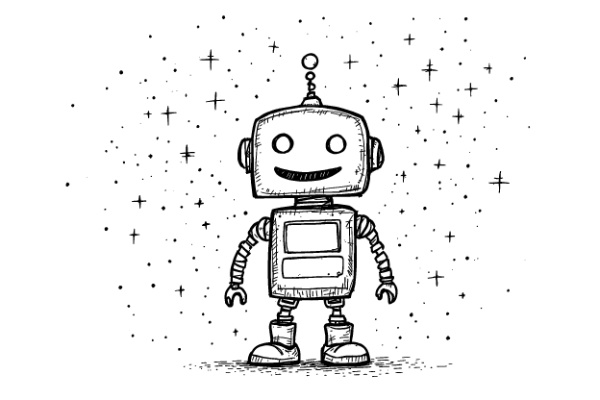Ever hired that perfect candidate on paper who turned out to be a complete disaster in person? Yeah, me too. There was this one time—I won’t name names to protect the guilty—when our team was blown away by a developer’s technical prowess. His code practically sang arias. But once onboarded, he communicated like a malfunctioning chatbot and treated teamwork as a contact sport. It was… messy.
It got me thinking: Are we putting too much emphasis on hard skills and not enough on the “softer” side of things? In an age where collaboration, adaptability, and emotional intelligence are crucial, perhaps we’ve been missing the forest for the trees.
The Myth of the Lone Genius
For decades, we’ve idolized the lone genius—the brilliant mind working in isolation, churning out masterpieces. Think Einstein scribbling equations or Steve Jobs conjuring the next big thing in a dimly lit garage. But let’s be real: Today’s workplace thrives on collaboration, not solitude.
I once worked with a brilliant analyst named Priya. She could dissect datasets faster than anyone, but her real talent was explaining complex insights in plain English. She turned numbers into narratives that our whole team could rally behind. Now that’s a superpower.
In contrast, the so-called rockstar who can’t play nice with others often ends up dragging the whole band down. Soft skills amplify hard skills. Without them, even the most technically proficient employee can become a liability.
Soft Skills: The Unsung Heroes of Success
So what exactly are these elusive soft skills everyone keeps buzzing about? Communication, empathy, teamwork, adaptability—the kind of stuff that doesn’t show up on a certificate but makes all the difference when deadlines loom and stress levels spike.
Imagine you’re piloting a plane. Technical know-how gets you off the ground, but navigating turbulence requires instinct, calm, and quick thinking. Similarly, soft skills are the emotional intelligence that guides teams through challenges.
I recall a project manager, Carlos, who could diffuse tension with a well-timed joke and steer meetings back on track without ruffling feathers. His ability to read the room was invaluable. You can’t code that.
The Changing Landscape of Work
The workplace isn’t what it used to be. Remote teams, cross-cultural collaborations, and flatter organizational structures mean that interpersonal skills are more critical than ever. The pandemic only accelerated this shift, thrusting us into Zoom rooms and Slack channels where nuances can easily get lost.
Consider this: According to LinkedIn’s Global Talent Trends report, 91% of talent professionals agree that soft skills are very important to the future of recruiting. And yet, our hiring processes often resemble relics from the Industrial Revolution, laser-focused on technical competencies.
Isn’t it time we evolve?
The Cost of Ignoring Soft Skills
Overlooking soft skills isn’t just an oversight; it’s a costly mistake. High turnover, low morale, project failures—they can often be traced back to employees who lacked emotional intelligence or couldn’t gel with the team.
A friend of mine works at a startup that hired a marketing guru with an impressive portfolio. On paper, she was a catch. In practice, she bulldozed her teammates’ ideas, hoarded information, and left a trail of resentment. Within months, key team members started jumping ship. The cost of replacing them far outweighed any short-term gains from her campaigns.
Investing in soft skills isn’t a feel-good exercise; it’s sound business strategy.
Hiring for the Future, Not the Past
Traditional hiring practices focus heavily on past experience and technical certifications. But in a rapidly changing world, what mattered yesterday might be obsolete tomorrow.
Think about how AI is reshaping industries. Technical skills need constant updating, but soft skills like creativity, critical thinking, and adaptability are timeless. They’re the gears that keep the machine running smoothly, no matter how the parts change.
Action: Shift your hiring criteria to prioritize potential over pedigree.** Look for candidates who demonstrate curiosity, resilience, and the ability to learn. These are the people who will grow with your company, not outgrow it.
Unconventional Interview Techniques
Standard interviews often fail to reveal a candidate’s true colors. Asking “What are your strengths and weaknesses?” is about as illuminating as a fortune cookie. To really gauge soft skills, you need to get creative.
At our company, we’ve started incorporating collaborative tasks into the interview process. We simulate real work scenarios where candidates must brainstorm solutions with potential teammates. It’s enlightening to see who listens, who leads, and who lobs a grenade into the group dynamic.
Another technique is to ask open-ended questions like, “Can you tell me about a time you had to navigate a difficult team situation?” The stories candidates choose to share can be very telling.
Action: Design your interviews to reveal soft skills in action.** It’s not foolproof, but it’s a step beyond the usual song and dance.
Training and Development: It’s Not One and Done
Hiring for soft skills is just the beginning. Cultivating these abilities is an ongoing process. Companies often invest heavily in technical training but leave employees to fend for themselves when it comes to personal development.
Consider implementing mentorship programs, soft skills workshops, and opportunities for cross-functional collaboration. Encourage employees to step out of their comfort zones. Remember Priya, the analyst? She grew her presentation skills by volunteering to lead training sessions for new hires. It benefited her, the team, and the company.
Action: Make soft skills development a core part of your company culture.** It’s an investment that pays dividends.
The Role of Leadership
Leadership sets the tone. If managers value and demonstrate strong soft skills, it cascades through the organization. Conversely, leaders who lack emotional intelligence can create toxic environments where soft skills wither.
I once consulted for a company where the CEO prided himself on being a “straight shooter.” In reality, he was abrasive and dismissive. Employee turnover was high, innovation was stagnant, and HR was putting out fires daily. Contrast that with leaders who prioritize communication and empathy—the difference is night and day.
Leaders must model the soft skills they wish to see. It’s not just about policies but everyday interactions.
Measuring the Immeasurable
One of the challenges with soft skills is that they’re hard to quantify. How do you measure adaptability or empathy?
While there’s no universal metric, feedback systems can provide insights. Regular 360-degree reviews, peer evaluations, and even client feedback can help gauge an employee’s soft skills.
Technology can assist, too. Some companies use AI-powered tools to analyze communication patterns, teamwork dynamics, and even sentiment in written communications. It’s not about surveillance but gaining a holistic understanding of how employees contribute beyond their task lists.
Action: Implement evaluation methods that capture both hard and soft skills.** Make it a balanced scorecard.
The Blend of Soft and Hard Skills: A Case Study
Let’s circle back to John—the coding whiz who disrupted the team. Contrast him with Maya, a developer with solid but not extraordinary technical skills. Maya excels in communication, eagerly mentors junior staff, and bridges gaps between departments.
Over time, Maya became a linchpin in the organization. Her projects consistently met deadlines, and her teams reported higher satisfaction levels. She wasn’t just writing code; she was enhancing the fabric of the company.
The synergy of soft and hard skills creates true value. It’s not an either/or proposition but a blend of competencies that drive success.
Overcoming Biases in Hiring
We all have biases, whether we admit it or not. Sometimes, we equate charisma with competence or mistake confidence for capability. This can lead to favoring extroverts over introverts, even when the latter may have stronger soft skills.
To mitigate this, standardize your evaluation criteria. Use behavioral assessments and structured interviews to level the playing field.
Action: Be mindful of biases that can skew your assessment of soft skills.** Diversity in thought and personality enriches teams.
The Future Is Human
Automation and AI are taking over routine tasks. What’s left are the uniquely human skills that machines can’t replicate—yet. Creativity, empathy, ethical judgment—these are the frontier of competitive advantage.
Organizations that recognize this shift and adapt their talent strategies accordingly will be better positioned for the future.
Soft skills are not just the new hard skills; they’re the skills that will define the next era of work.
Putting It All Together: A Roadmap
Audit Your Hiring Process: Identify where soft skills are being overlooked and adjust your criteria.
Train Interviewers: Equip your hiring team with techniques to assess soft skills effectively.
Foster Continuous Development: Create programs that encourage growth in interpersonal abilities.
Lead by Example: Ensure leadership embodies the soft skills you value.
Measure and Adjust: Use feedback mechanisms to assess and refine your approach.
Celebrate Soft Skills: Acknowledge and reward employees who exemplify these traits.
Remember: This isn’t about lowering technical standards but raising the bar for what it means to be a valuable team member.
A Final Thought
Next time you sift through a stack of resumes or conduct an interview, pause and consider the whole person in front of you. Skills can be taught, but attitude and emotional intelligence are harder to instill. By prioritizing soft skills, you’re not just filling a position; you’re enhancing your organization’s capacity to adapt and thrive.
Ready to transform your hiring process and tap into the full spectrum of talent out there? Machine Hiring offers tools that help you assess both hard and soft skills, ensuring you build a team that’s not just competent but cohesive. They’ve got a free trial—why not give it a whirl?
Related Posts
- The Hidden ROI of Employee Onboarding: Why Your First 90 Days Make or Break Success
- How to Reduce Bias in Remote Hiring
- Transform Your Candidate Experience: A Modern Recruiter’s Guide
- Remote Hiring Playbook: Building High-Performing Distributed Teams
- The Psychology of Job Descriptions: How AI Can Help Write Better Job Posts


